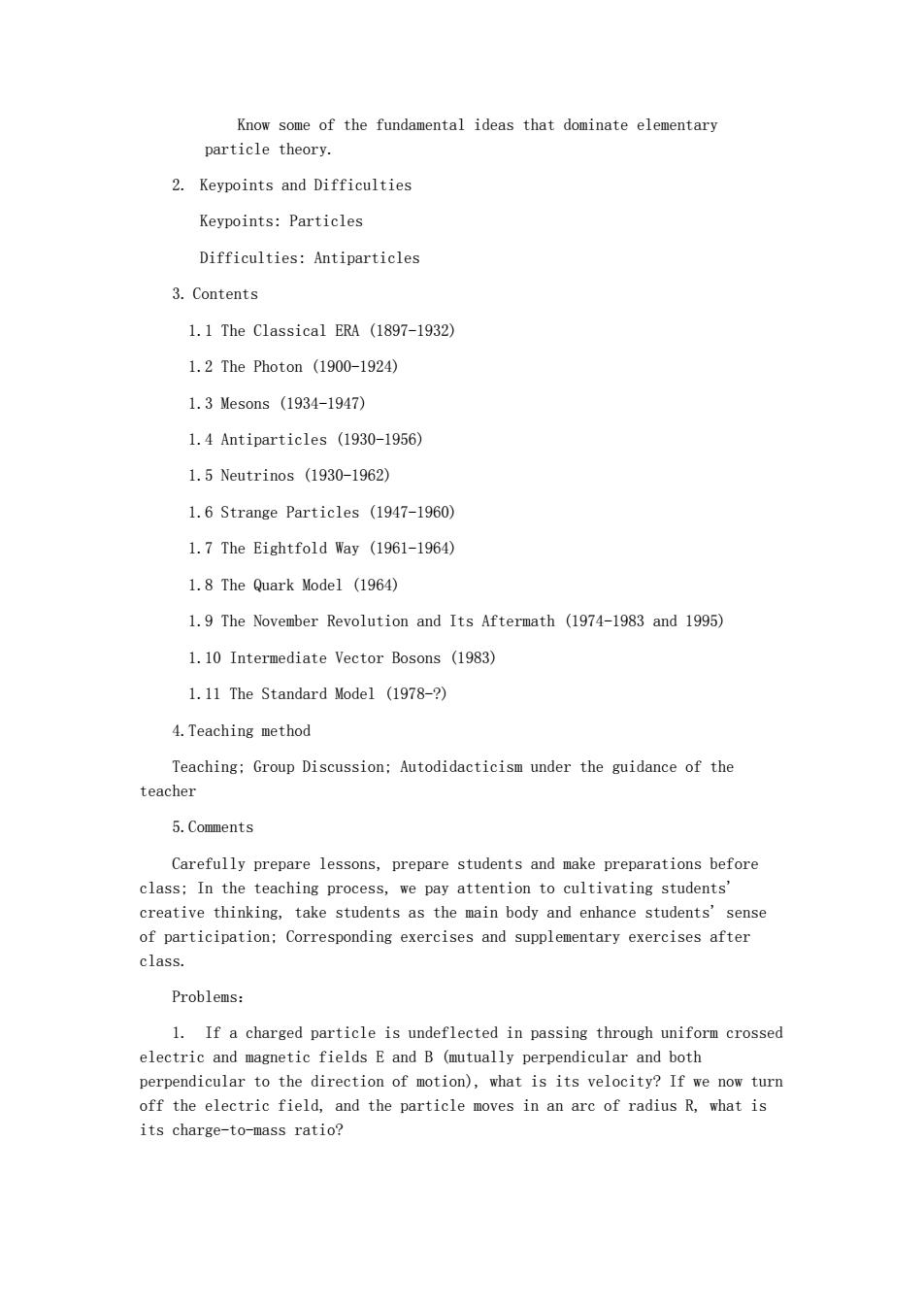正在加载图片...

Know some of the fundamental ideas that dominate elementary particle theory. 2.Keypoints and Difficulties Keypoints:Particles Difficulties:Antiparticles 3.Contents 1.1 The Classical ERA (1897-1932) 1.2 The Photon(1900-1924) 1.3 Mesons(1934-1947) 1.4 Antiparticles (1930-1956) 1.5 Neutrinos(1930-1962) 1.6 Strange Particles (1947-1960) 1.7 The Eightfold Way (1961-1964) 1.8 The Quark Model (1964) 1.9 The November Revolution and Its Aftermath (1974-1983 and 1995) 1.10 Intermediate Vector Bosons (1983) 1.11 The Standard Model (1978-?) 4.Teaching method Teaching:Group Discussion:Autodidacticism under the guidance of the teacher 5.Comments Carefully prepare lessons,prepare students and make preparations before class:In the teaching process,we pay attention to cultivating students' creative thinking.take students as the main body and enhance students'sense of participation:Corresponding exercises and supplementary exercises after class. Problems: 1.If a charged particle is undeflected in passing through uniform crossed electric and magnetic fields e and b (mutually perpendicular and both the direetion of motio),hat is its velocity?If field d the particle oves i n ar ous ht i its charge-to-mass ratio?Know some of the fundamental ideas that dominate elementary particle theory. 2. Keypoints and Difficulties Keypoints: Particles Difficulties: Antiparticles 3. Contents 1.1 The Classical ERA (1897-1932) 1.2 The Photon (1900-1924) 1.3 Mesons (1934-1947) 1.4 Antiparticles (1930-1956) 1.5 Neutrinos (1930-1962) 1.6 Strange Particles (1947-1960) 1.7 The Eightfold Way (1961-1964) 1.8 The Quark Model (1964) 1.9 The November Revolution and Its Aftermath (1974-1983 and 1995) 1.10 Intermediate Vector Bosons (1983) 1.11 The Standard Model (1978-?) 4.Teaching method Teaching; Group Discussion; Autodidacticism under the guidance of the teacher 5.Comments Carefully prepare lessons, prepare students and make preparations before class; In the teaching process, we pay attention to cultivating students' creative thinking, take students as the main body and enhance students' sense of participation; Corresponding exercises and supplementary exercises after class. Problems: 1. If a charged particle is undeflected in passing through uniform crossed electric and magnetic fields E and B (mutually perpendicular and both perpendicular to the direction of motion), what is its velocity? If we now turn off the electric field, and the particle moves in an arc of radius R, what is its charge-to-mass ratio?